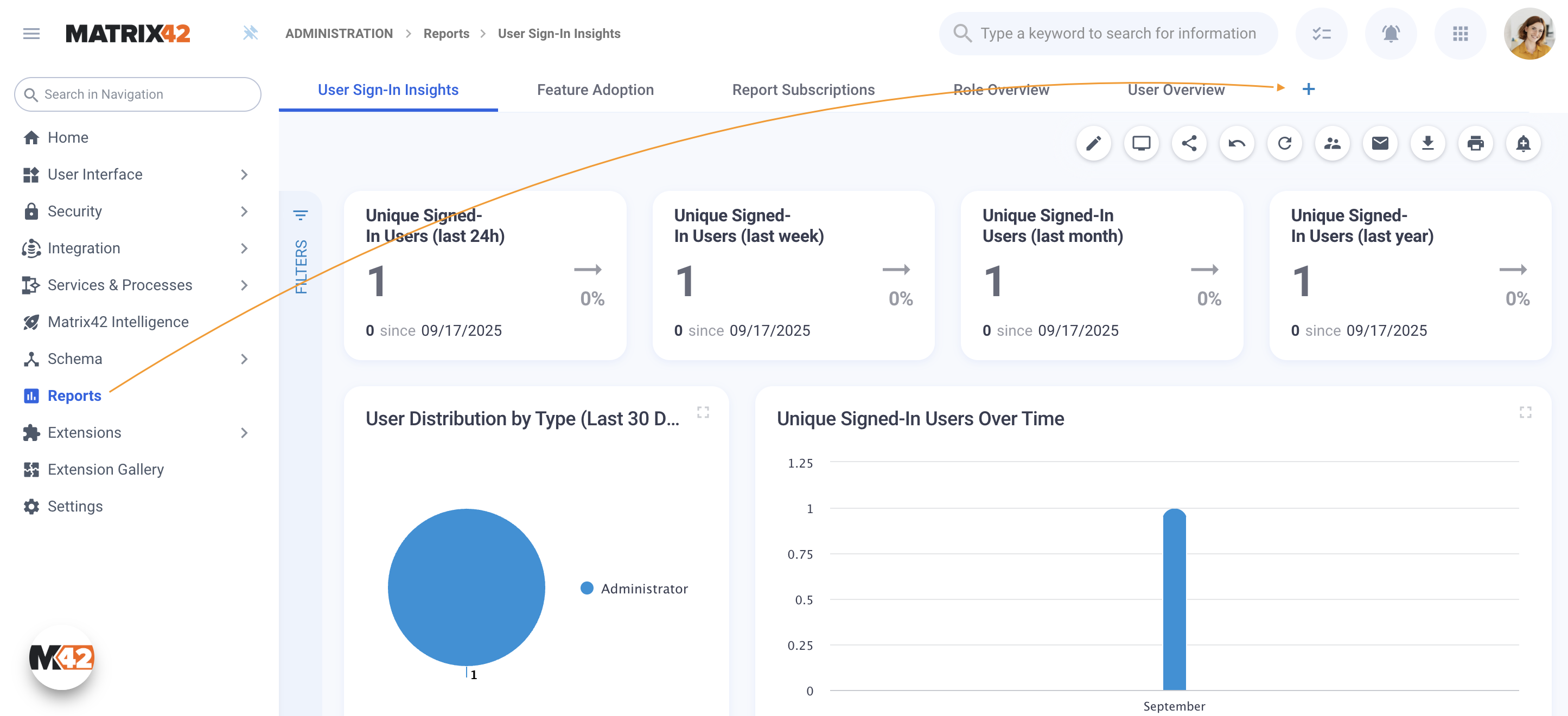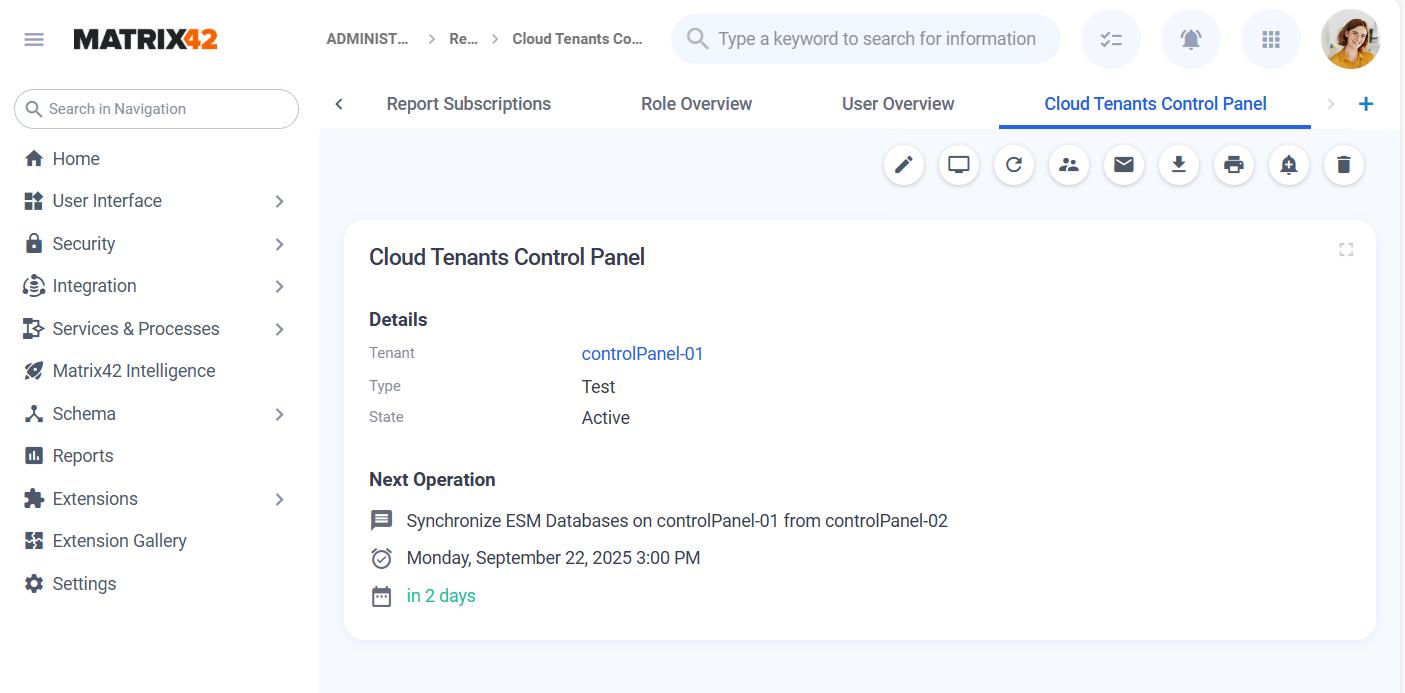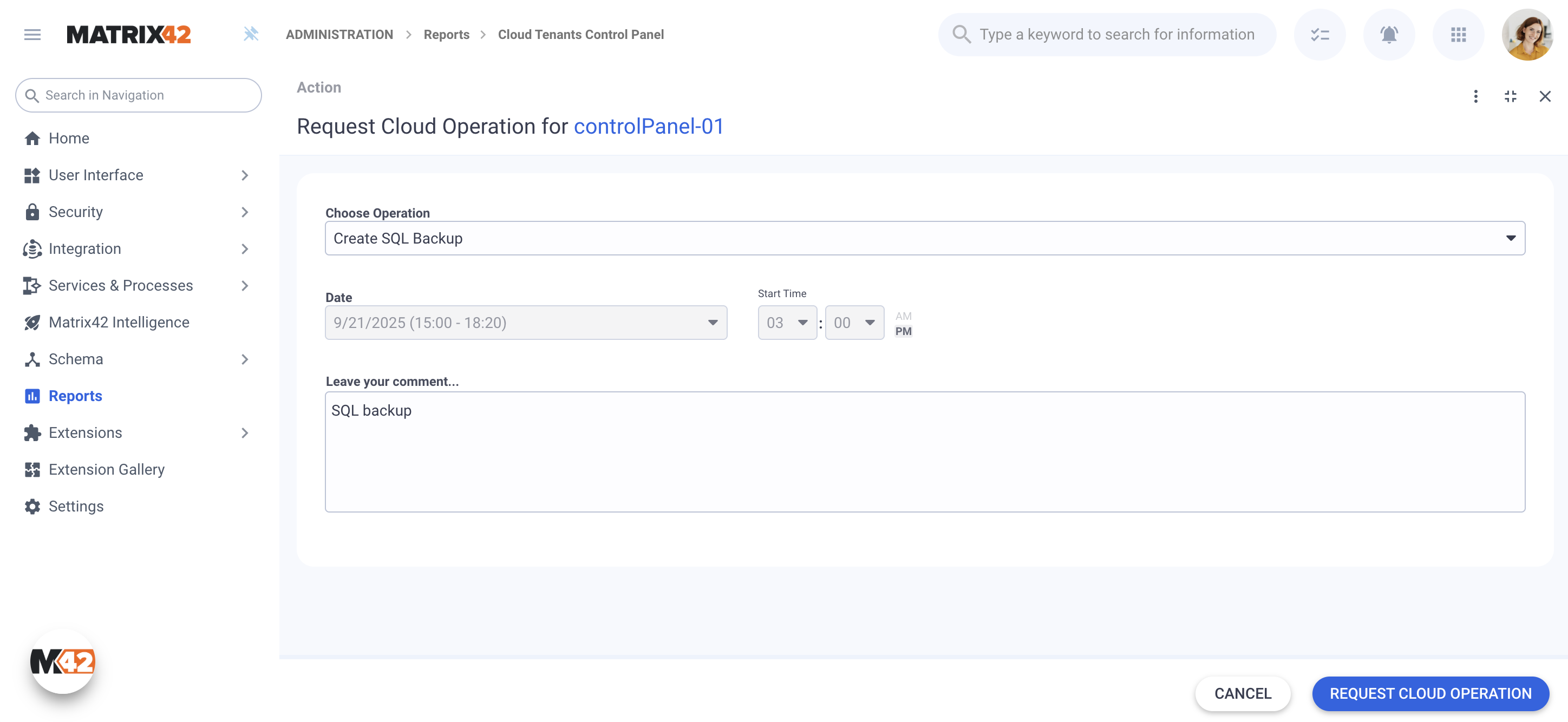Cloud Tenants Control Panel (Extension)
Overview
The Cloud Tenants Control Panel extension provides the following self-service options that can be run and managed on demand:
- Update ESM
- Create SQL Backup
- Clone Database from Production Environment
Cloud Tenants Control Panel
After the extension is installed, you need to add the Cloud Environment widget to any report or dashboard in the application of your choice, for instance:
- Create a new report in the Administration application:

- In the title, set Cloud Tenants Control Panel
- In the Dashboard Configuration panel, click + Add New widget action

- Select the Miscellaneous category
- Choose Cloud Environment widget
- Provide the title for the widget, e.g., Cloud Tenants Control Panel
- Click Save to save the widget settings
- Click Done Editing to save the dashboard:

Cloud Panel information
The widget displays the following information:
- Details:
- Tenant: the current tenant name
- Type: environment type, e.g. Test
- State: environment state, e.g. Active
- Next Operation: shows the details of the next scheduled operation or informs that no operations are currently scheduled.
- Expected Downtime: this section appears for operations that activate maintenance mode and indicates how long the system will be unavailable.

Request Operation
Common Rules
- The Update and Cloning operations can be scheduled only two days in advance.
- Only one scheduled operation is allowed per environment.
- If the requested operation confirmation failed, the next attempt is available in one hour.
- It is not possible to schedule a new operation while another one is waiting for confirmation. The process cannot be started if there are any open Change Requests associated with the environment. All Change Requests must be reviewed and closed in accordance with change management procedures before initiating this operation. For assistance, please contact Support.
To run the action, click on the tenant link in the widget to open the preview and click Request Operation:

A confirmation code is required every time the operation is requested. The code is sent to the email, as shown in the example below:

Operations
ESM Update
Allows scheduling the installation of ESM Hotfixes with a build number higher than the current one.
- Limitations: there is no limit to the number of operations you can schedule. As long as a newer build is available for the current version, a new update request can be created.
- Particularities: the scheduled Update operation can be rescheduled
Scheduling Update
To request the update, specify the following information:
- Choose Operation: select Update ESM to {version}
- Date: select the day from the suggested options and specify the time within the available time window.
- Leave your comment: a mandatory field where you can specify the reason for the requested operation.

When the task processing is successfully completed, the action initiator receives an email with the following information:

Cloning
Available only when the Production Environment for the same customer exists with the same version, and the interactive user is a Tenant Representative for the Production and the current Test/Dev environment.
- Limitations: cloning operation can be executed not earlier than 3 months after the previous successful cloning
- Particularities: the scheduled Cloning operation can be cancelled
To request cloning, specify the following information:
- Choose Operation: select Clone Database from Production Environment '{environment_name}'
- Date: select the day from the suggested options and specify the time within the available time window.
- Leave your comment: a mandatory field where you can specify the reason for the requested operation.

The Cloud Tenants Control Panel will show the following information:

Create SQL Backup
This action executes ESM Database backup.
- Limitations: the operation can be executed only once a month.
To request the operation, specify the following information:
- Choose Operation: select Create SQL Backup.
- Date: the date cannot be scheduled. This operation does not require activation of the Maintenance mode in the system, and therefore, it starts immediately after submitting the Cloud Operation request.
- Leave your comment: a mandatory field where you can specify the reason for the requested operation.
